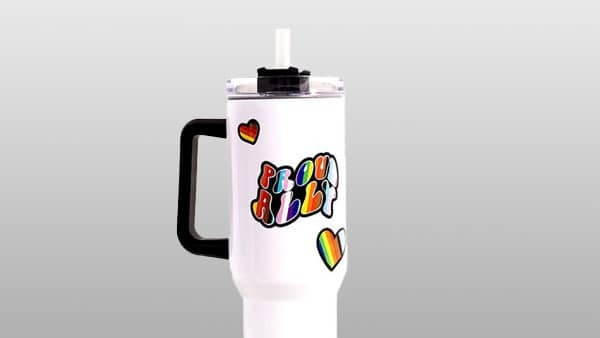Storing your heat transfer vinyl properly is crucial to maintaining its quality and ensuring successful application when you're ready to use it. Here are some tips on how to best store your HTV:
Keep in a Cool and Dry Environment
Store your HTV in a cool, dry place away from direct sunlight and heat. Exposure to heat and sunlight over time can affect the adhesive properties and overall quality of the vinyl.
Use Airtight Containers
Consider placing your HTV rolls or sheets in airtight containers or plastic bags. This helps prevent exposure to moisture, which could compromise the adhesive backing of the vinyl.
Store Flat
Store your HTV rolls or sheets flat rather than on end to avoid warping. If the material becomes warped, it may not cut or weed as effectively, leading to issues during the application process.
Avoid Extreme Temperatures
Extreme temperatures, whether too hot or too cold, can negatively impact the adhesive on the HTV. Keep the storage environment within a moderate temperature range to ensure the vinyl maintains its integrity.
Label Your HTV
Clearly label each roll or sheet with essential information such as color, type, and date of purchase. This makes it easier to locate the specific HTV you need and helps you keep track of its age.
Moisture Control
Use moisture-absorbing packets or silica gel packs in the storage area to help control humidity. Excessive moisture can lead to mold, mildew, or degradation of the vinyl's adhesive.
Organized Storage
Keep your HTV organized based on color, type, or project. This makes it easier to find what you need when you're working on a specific project, saving you time and reducing the risk of damage during searching.
Avoid Sharp Objects
Be mindful of sharp objects or edges in the storage area that could potentially damage the vinyl. Store your HTV away from tools, cutting implements, or other items that could cause scratches or cuts.
It's essential to store HTV properly and be attentive to any changes in its characteristics when working on projects. If you experience difficulties, such as poor adhesion or brittleness, it may be time to consider replacing the HTV to ensure the success of your projects.

 Custom Printed Apparel
Custom Printed Apparel Custom DTF Apparel
Custom DTF Apparel Embroidered Apparel
Embroidered Apparel
 Full Service Customization
Full Service Customization Rhinestone Apparel
Rhinestone Apparel
 Sublimated Apparel
Sublimated Apparel
 Custom Drinkware/Photo Panels
Custom Drinkware/Photo Panels Siser Sanmar Decoration
Siser Sanmar Decoration Seasonal Items
Seasonal Items DTF Transfers
DTF Transfers
 Supacolor Transfers
Supacolor Transfers
 Sublimation Transfers
Sublimation Transfers
 Rhinestone Transfers
Rhinestone Transfers
 HTV Transfers
HTV Transfers
 Custom Patches, Stickers, & Magnets
Custom Patches, Stickers, & Magnets Custom Screen Print Transfers
Custom Screen Print Transfers Artwork & Services
Artwork & Services
 Custom Banners
Custom Banners